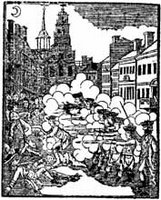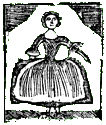On 30 June 1778, Washington replied to that letter, rejecting the charge of using harsh language but leaving no doubt that he was sticking with the substance of his criticism:
I received your letter (dated thro’ mistake the 1st of July) expressed as I conceive, in terms highly improper. I am not conscious of having made use of any very singular expressions at the time of my meeting you, as you intimate. What I recollect to have said, was dictated by duty and warranted by the occasion. As soon as circumstances will permit, you shall have an opportunity, either of justifying yourself to the army, to Congress, to America, and to the world in General; or of convincing them that you were guilty of a breach of orders and of misbehaviour before the enemy on the 28th Inst. in not attacking them as you had been directed and in making an unnecessary, disorderly, and shameful retreat.Aide-de-camp Lt. Col. John Fitzgerald delivered that letter to Lee.
As most historians read the correspondence, Lee replied to Washington twice that same day. Lee was still struggling with the dates of his letters, and he dated his first reply 28 June instead of 30 June even as he apologized for misdating the letter that started this all. He wrote:
I beg your Excellency’s pardon for the inaccuracy in misdating my letter—you cannot afford me greater pleasure than in giving me the opportunity of shewing to America the sufficiency of her respective servants—I trust that temporary power of office and the tinsel dignity attending it will not be able by all the mists they can raise to affuscate the bright rays of truth, in the mean time your Excellency can have no objection to my retiring from the army—Finally, Lee sent a third letter after the second, this time dated 30 June:
Since I had the honor of addressing my letter by Col. Fitzgerald to your Excellency I have reflected on both your situation and mine, and beg leave to observe that it will be for our mutual convenience that a Court of inquiry should be immediately ordered—but I could wish it might be a court martial—for if the affair is drawn into length it may be difficult to collect the necessary evidences, and perhaps might bring on a paper war betwixt the adherents to both parties—which may occasion some disagreeable feuds on the Continent—for all are not my friends, nor all your admirers—I must intreat therefore from your love of justice that you will immediately exhibit your charge—and that on the first halt, I may be brought to a tryal—A court-martial was a more serious forum than a court of inquiry; Lee was taking the risk that he might be punished, not just deemed at fault. A talented political writer, Lee was also warning Washington that he might prevail in the court of public opinion. Indeed, a couple of days later, Lee was unable to resist the temptation to make his case in the newspapers as soon as he saw an item critical of his movements at Monmouth.
A court-martial was convened on 4 July. The first two charges against Lee took language directly from Washington’s letter above, including the phrase “making an unnecessary, disorderly, and shameful retreat.” As for the third charge, that was for sending two disrespectful letters to Gen. Washington.















